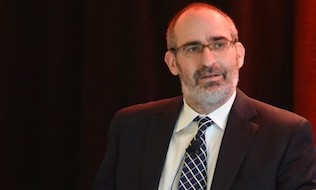

Plan sponsors that have been hoping the recent trend of quickly rising drugs costs will end soon should realize “it’s only going to get worse” and start making changes to their benefits plans, an executive at Green Shield Canada said yesterday.
“What’s happening right now is normal in benefit plans and it’s only going to get worse,” David Willows, vice-president of strategic market solutions at Green Shield, said at an event in Hamilton, Ont., on Thursday to present the results of the insurer’s 2017 health study.
Many plan sponsors, Willows noted, have kept their plans largely as is in the hopes that cost increases will moderate. “As long as you can afford it, why rock the boat?” said Willows, describing many organizations’ thinking.
Read: Benefit costs to trend even higher in 2017
Increases to drug costs have, in fact, moderated somewhat, with Green Shield’s total drug spend up about 5.7 per cent in 2015-16, which was down from the more than nine per cent increase the year before. But as Willows noted, the latest increase follows a couple of years of significant boosts in drug spending, meaning plan sponsors are continuing to feel the cost pressures.
When it comes to getting costs under control, Willows emphasized the need to make more room for biosimilars. While Green Shield’s policy focuses on having new patients start on biosimilars, the conversation about switching those already on a biologic “is coming,” Willows said.
“We need a marketplace for biosimilars . . .,” he said, suggesting it’s time to move away from negotiating agreements for price reductions on biologics and instead put more emphasis on biosimilars.
Other ways to get costs under control include a greater focus on wellness and directing plans towards those benefits that deliver the best outcomes, according to Willows. So that means, he noted, a shift towards health coaching, exercise and cognitive behavioural therapy and less focus on paramedical services like massage and chiropractic. Massage therapy, he acknowledged, is relaxing. “That’s a good thing, and it has value.” But naps are also helpful, he added. “It’s wonderfully relaxing and it’s zero dollars.”
Read: What to do about biosimilars?
Green Shield’s health study also raised concerns about prescription rates for antidepressants. Of adults treated for depression, about 30 per cent had undergone screening for the condition, according to the study. And of adults who had undergone screening for depression, less than 30 per cent received any treatment for it. “This group — depressed — not even in the system,” said Willows, who noted the concern that many of the people on antidepressants are experiencing mild to moderate depression. Drugs, he added, tend to be most effective for those with more severe forms of the condition. “What we’re worried about is some really sick people out there not getting treatment,” said Willows, emphasizing the need to make other interventions, such as counselling, more widely available.
And when it comes to boosting the value of benefits dollars, Willows noted Green Shield is also taking a look at pharmacy performance. This year, it will be examining pharmacy claims data on a store-by-store basis to look at factors like adherence rates and whether pharmacists are delivering the health coaching services that a plan provides. Next year, he noted, plan members will start to see a store’s rating on Green Shield’s website. Eventually, the idea is to base reimbursement on a pharmacy’s score, Willows noted.
